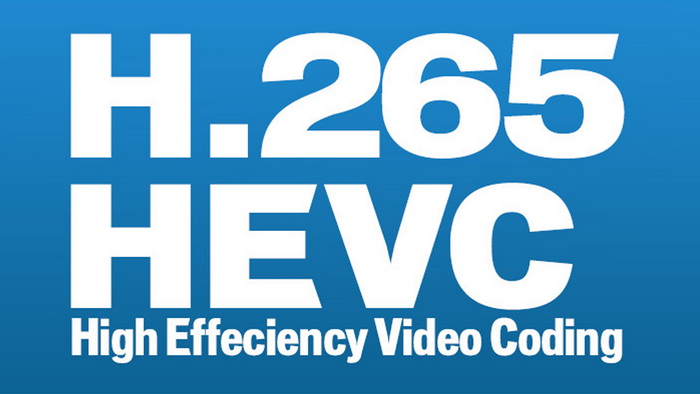HEVC (H.265) Codec
T
Until recently, if you recorded a video with your mobile phone or watched a video on the web, it was most likely encoded with the Advanced Video Coding (AVC) standard. This standard, also known as H.264, was developed in 2003 and it started to become widespread in 2008 after leading platforms like Adobe Flash and Blu-ray Disc adopted it for High Definition Video.
High-Efficiency Video Coding (HEVC, or H.265) is the latest video compression standard developed by the Motion Picture Experts Group (MPEG), finalized in 2013. HEVC is able to compress video up to twice as efficiently as AVC, letting you encode a video in a file that is about half the size of AVC at the same quality level. The higher compression efficiency also means that for a given bit rate or file size, HEVC encodes video with significantly higher quality than AVC.
Efficient solution for 4K distribution
The higher compression efficiency of HEVC will enable efficient recording and distribution of Ultra High Definition (UHD, 4K, 2160P) video. While UHD has four times as many pixels per frame (3840 x 2160) as HD video (1920 x 1080), HEVC will enable UHD to be encoded with reasonable bit rates (roughly twice the bits per second required for good HD video today, instead of 4x the bit rate). While HEVC is essential for efficient storage and distribution of Ultra High Definition video, it provides the same benefit at smaller video picture sizes (High Definition, Standard Definition, etc.). As a result, HEVC is rapidly being adopted by many companies and organizations worldwide. Here is a small sample of the hundreds of products and video services adopting HEVC;
- Apple’s iPhone 6 uses HEVC for Facetime video chats over cellular networks
- The Samsung Galaxy S4 supports HEVC decoding
- Amazon Instant Video streams Ultra High Definition movies encoded with HEVC
- Netflix is streaming Ultra High Definition movies encoded with HEVC
- M-Go offers both streaming and downloading of Ultra High Definition movies encoded with HEVC.
- Sony, Samsung, LG, and many major TV manufacturers support HEVC decoding in their latest models. Today, nearly all 4K/UHD TVs support HEVC decoding. If you’re buying a new TV, you should definitely look for one that can decode HEVC (H.265).
- The next-generation Ultra High Definition Blu-ray Disc standard utilize HEVC
- Windows 10 support HEVC playback natively
- The Samsung NX-1 Digital Camera records 4K video with HEVC
- AMD’s Carrizo processors support hardware decoding of 4K HEVC
- NVIDIA’s GTX-980 graphics processors support HEVC hardware encoding and hybrid hardware/software HEVC decoding
- The latest generation Qualcomm Snapdragon 801, 805, 808, and 810 mobile/embedded processors support HEVC decoding and encodings
- Marvell’s Armada 1500 Pro 4K processors (for set-top boxes and other home entertainment devices) support full 4K, 10 bit 60P HEVC decoding
- The MediaTek MT8127 quad-core ARM processors support HEVC decoding for tablets
- Imagination Technologies supports HEVC encoding and decoding in their PowerVR Series5 mobile video processor designs (licensed to leading mobile device vendors).
* * *
- 4K HDR Video
- Monitors with 4K resolution
- 4K Projectors
- 4K Smartphones
- Streaming Devices capable of 4K resolution
- 4K vs 8K resolution
- 4K Webcams
- A comparison of 4K against all the available consumer video resolutions
- Best 4K Action Cams
- The best 4K cameras on smartphones
- Best 4K Hindi / Tamil / Bollywood Movies
- Everything you need to know about 4K Projectors
- How to download any streaming 4K video in just 3 steps!
- PC hardware capable for playing games at 4K resolution
- Top 5 4K software video players for PC/Mac
- List of top 10 4K / Ultra HD TV
- Top graphics cards for 4K gaming
- Top-rated 4K movies
- What are UHD and 4K video
- Is the human eye capable to see in 4K?